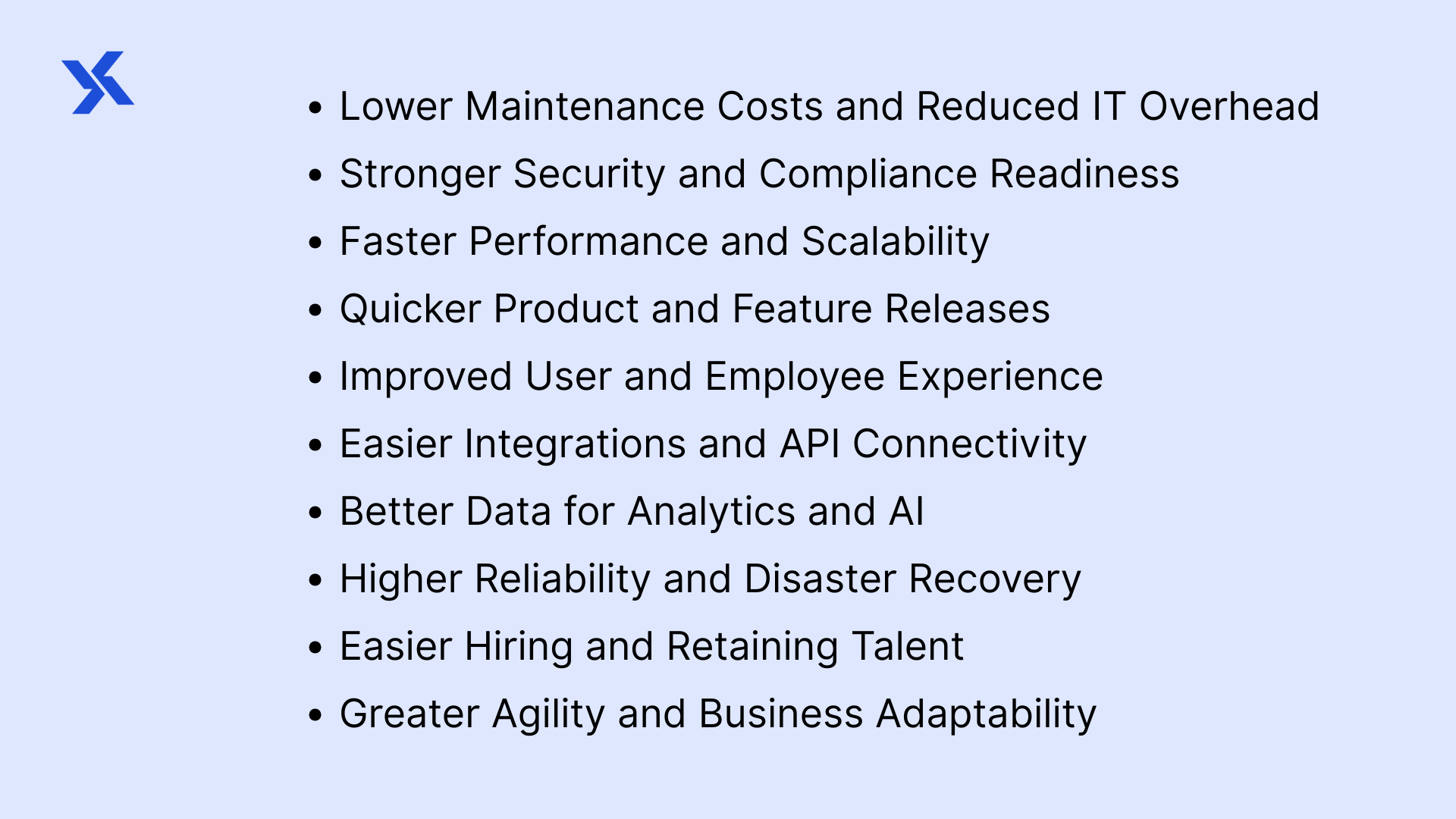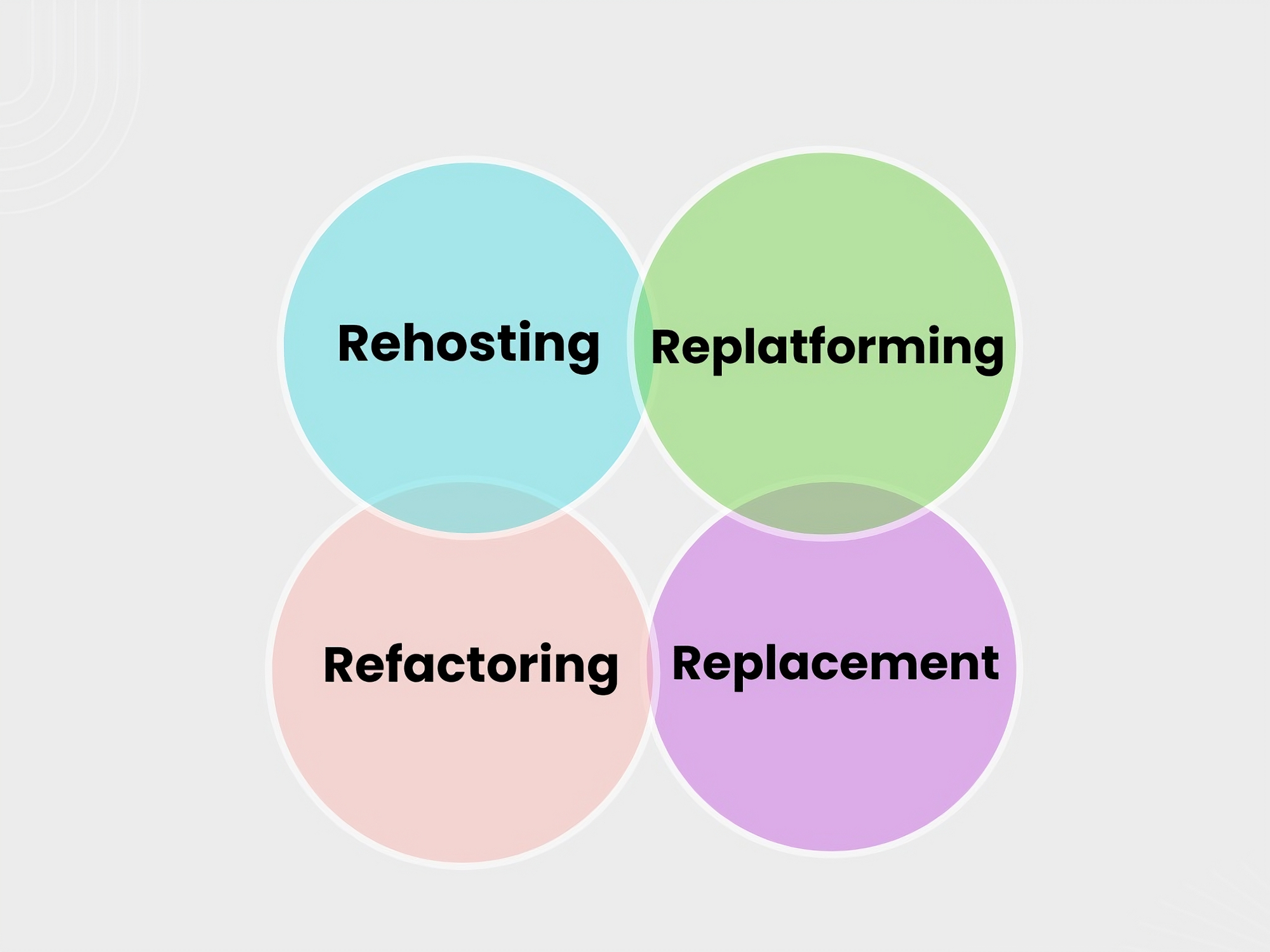August 15, 2025
7 min read

If you have been running a business for a while, chances are you have at least one legacy system still running in the background. It might be your ERP, your CRM, or an internal tool your team cannot live without but struggles to maintain. On the surface, it still works.
But if you take a closer look, you may see it slowing processes, increasing maintenance costs, and making integrations unnecessarily complicated.
Over the past decade, legacy system modernization has become a priority across many industries. Banks are replacing decades-old mainframes so they can launch new digital services faster. Hospitals are upgrading patient record systems so doctors can access accurate data in real time. Retailers are adopting cloud-based platforms so they can respond instantly to shifts in demand.
The pattern is clear. In the sections that follow, we will look at what legacy system modernization means, why it has become essential for businesses of all sizes, and how you can approach it in a practical and cost-effective way.
Legacy system modernization is the process of updating older software, hardware, or IT infrastructure to meet current technology standards and future business needs.
It involves assessing your existing applications, infrastructure, and databases, then deciding whether to migrate them to the cloud, replatform for better scalability, refactor the code for improved performance, or completely rebuild them with modern software architecture.
In short, it is a structured upgrade of your technology stack so your systems are easier to maintain, more cost-efficient, and ready for future growth.
Legacy system modernization isn’t just about upgrading old software. It’s about making your business faster, more secure, and ready for future growth.
Over the years, we’ve seen businesses that stick with outdated systems face high maintenance costs, security risks, slow innovation, and unhappy teams. Gartner research shows that over 80% of IT budgets in such organizations go toward simply running existing systems, leaving little for growth-focused projects.
Here are 10 real benefits businesses experience when they modernize their legacy systems.

Let’s go through each of the benefits above and see how they can inspire you to take action on legacy system modernization.
By replacing outdated hardware, moving to cloud platforms, and retiring unused components, businesses can cut down on infrastructure bills and support costs. Legacy systems often require constant patching, specialized support staff, and costly licensing fees. Modern platforms automate updates and need far less manual work.
In recent years, many organizations have reduced annual IT operating costs by 20 to 40 percent simply by moving from on-premise infrastructure to scalable cloud services. This shift frees up budgets for innovation instead of just “keeping the lights on.”
Modern systems integrate advanced security protocols like multi-factor authentication, data encryption by default, and automated vulnerability scanning.
Older software often lacks built-in protections, making it more vulnerable to cyberattacks. This risk has only increased with rising global data breaches.
Businesses that upgraded saw a significant drop in security incidents and compliance penalties.
Healthcare providers, for example, achieved HIPAA compliance faster because modernized systems had built-in audit trails and encryption.
Modernization often involves breaking monolithic applications into microservices, adding caching, and moving workloads to elastic cloud environments.
Legacy systems struggle with sudden spikes in usage, often crashing or slowing down, whereas modern systems automatically scale up or down based on demand. For example, e-commerce companies have reduced website load times from several seconds to under one second during holiday sales, directly boosting conversions and lowering cart abandonment.
With DevOps pipelines, automated testing, and continuous deployment, updates can be released in days instead of months.
In today’s market, speed to market can make or break a product, yet legacy systems often force long release cycles due to manual processes. Companies that modernized have gone from releasing two or three times a year to weekly or even daily deployments, allowing them to respond instantly to customer feedback.
Modern systems allow you to redesign interfaces, make them mobile-friendly, and integrate automation into workflows. Clunky, outdated interfaces slow down employees and frustrate customers.
For example, a logistics company that modernized its order management system cut order processing time by 50 percent, reducing customer complaints and improving employee satisfaction.
Moving to an API-first architecture allows systems to connect easily with CRMs, ERPs, analytics tools, and partner platforms.
Legacy systems often rely on manual data transfers or fragile one-off connections that break with every update. For example, a retail chain integrated its inventory system with suppliers’ APIs, reducing stock-outs and overstock issues by 35% within the first year.
Modernized systems unify data in warehouses or lakehouses, making it clean, accessible, and ready for analytics or machine learning. Legacy systems create data silos and inconsistent formats, making analysis slow and unreliable.
After modernization, one manufacturing firm implemented predictive maintenance using AI, reducing machine downtime by 30 percent and saving millions annually.
Cloud-native and modern systems offer multi-region backups, automated failover, and continuous monitoring.
Downtime directly costs money and damages trust, yet legacy systems rely on slow, error-prone manual failover processes. For example, a financial services company improved uptime from 97 percent to 99.99 percent after migrating critical systems to a multi-region cloud architecture.
Modern tech stacks attract developers, DevOps engineers, and data specialists who prefer working with current tools.
Few people want to maintain outdated code in obsolete languages, making it hard to hire and retain talent. Startups that replaced outdated stacks with modern languages like Python, JavaScript, or Go filled critical roles faster and reduced turnover.
Modular systems allow you to add features, launch new services, or pivot to new business models without overhauling everything.
In rapidly changing markets, being able to adapt quickly is a major competitive advantage. During the pandemic, companies with modern systems launched new online services or delivery models in weeks, while those on legacy systems took months or were unable to adapt.
Modernizing a legacy system can feel daunting, especially if your business depends on it daily. The key is to treat it like a strategic project rather than a quick fix. The right approach ensures you minimize risks, control costs, and maximize the business impact. Here’s a practical roadmap you can follow:
Don’t just look at what’s old. Understand how each system component performs, its dependencies, and the risks it poses. Map out applications, databases, and infrastructure. Ask questions like:
Modernization is not just about technology—it’s about outcomes. Decide what success looks like for your business. Common goals include:
Your technology approach should be directly aligned with these goals. For example, if speed to market is critical, adopting cloud-native architecture or microservices is more effective than simply rehosting.

There is no one-size-fits-all solution. Your choice depends on system complexity, budget, and long-term vision. Options include:
Not all systems need to be modernized at once. Identify high-value or high-risk systems to tackle first. For example:
Data is the backbone of any system. Ensure your modernization plan includes:
Avoid attempting a complete overhaul in a single move. Adopt a phased rollout:
Modernization succeeds only when your team can use and manage the new system effectively. Provide:
Once the system is live, your work is not done. Continuous monitoring ensures performance, security, and user satisfaction remain high. Use metrics to track:
If you want a more detailed, step-by-step roadmap, we have a separate blog titled “Legacy System Modernization in 2025: A Step-by-Step Guide”. In that post, you can explore practical strategies, real-world examples, and actionable tips to plan and execute modernization successfully.

Surveys show that application modernization is a top priority for most organizations. Many are actively updating their custom applications, completing small-scale projects, or moving toward continuous modernization.
Companies are also leveraging external partners, AI, and multiple strategies like rehosting, replatforming, and refactoring to modernize efficiently.
At MTechZilla, we’ve seen how modernizing legacy systems can completely change the game for businesses. Whether it’s cloud migration, microservices, API integration, UI/UX redesign, or AI implementation, we help companies take practical steps to upgrade and grow. If your systems are holding you back, we can guide you to make them future-ready.
Let’s have a consultation call to discuss your Legacy Application Modernization needs.


Share your product idea and challenges

Discuss possible approaches and solutions

Define a roadmap for your project